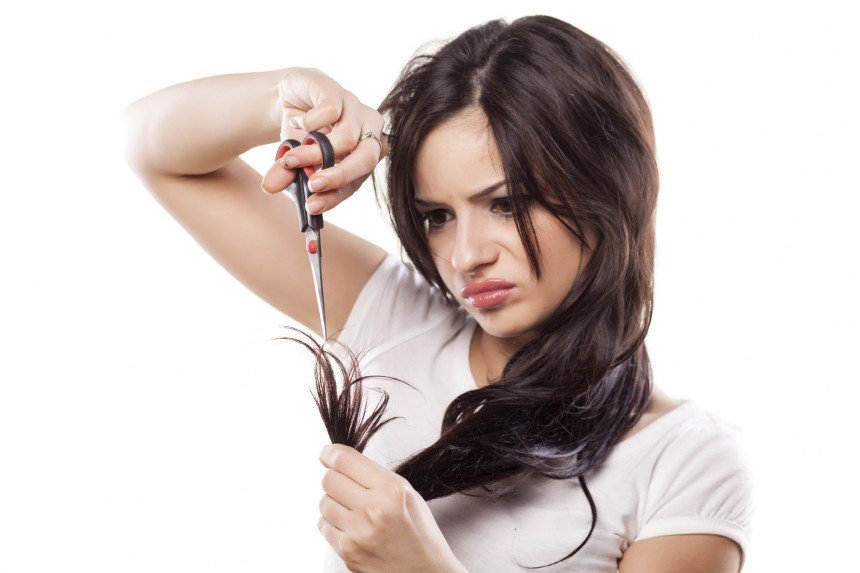The key word? Porosity. It is a hot topic among vloggers, bloggers and women all over the world. Since we know more and more about hair structure, hair care methods start reaching the highest standards.
If you still don’t know your hair porosity, you must read on!
Porosity – it is one of the anatomic features of our hair. It defines the position of cuticle scales. The porosity can be low, medium or high; low is the best one, high is the worst. When hair scales open, the hair gets more sensitive, its appearance changes and we start facing different problems.
We must tell about human hair structure (at least briefly) if we want to say something more about hair porosity.
Hair structure
Every hair (even the smallest one) is made of a root (under the skin) and a stem. In hair care, we must make sure we take care of hair follicles that are under the skin. New cells (responsible for hair growth) are born in the follicles. Hair bulb is a part of the follicle and we must know a bit more about it. The bulb is the only living part of our hair. It is essential to properly nourish and moisturise the bulbs in order to keep our hair healthy.
What is above the skin? Hair stem that is divided into three parts: root, middle part and ending. That is why, we say we take care of the hair “from the roots to the ends”. However, it is more important to differentiate between hair layers. It will bring us to detailed info about hair porosity.
Hair stem consists of:
- Medulla – found only in thick hair,
- Cortex – made of keratin; protects the hair;
- Cuticle – calloused keratin in form of scales.
The last part – the cuticle – is the external layer. A single hair is composed of 7-10 transparent (not always) cuticle scales that make up the external structure. Their characteristic is flexibility so they are able to cling to each other – more or less tightly.
The cuticle scales react to the change of temperature or pH of the environment. What does it mean? We can open them by rinsing the hair with warm water or warming up with a blow-dryer. What for? Nutrients of a hair oil or other product will be absorbed into the hair more easily. It is important to remember to rinse the hair with cold water or vinegar rinse after every treatment (also washing). Consequently, the scales will close thus hair will get smooth.
What is hair porosity?
We can speak of a particular porosity when the scales stay in a given position for a long time. When we deliberately close or open the scales during hair treatment, our porosity doesn’t change. The porosity refers to the permanent condition of our external cuticle layer.
Hair can have three types of porosity:
- Low: so called low porosity hair – the cuticle scales cling to each other.
- Medium: so called medium porosity hair – the scales are half-open.
- High: so called high porosity hair – the scales are wide open.
Why is hair porosity worth knowing? The answer is simple: hair condition depends on hair porosity. Low porosity hair is the healthiest so we aim for low porosity in our hair care. However, this hair type is hard to style and takes a long time to dry. On the other hand, high porosity hair is the weakest, most damaged and dehydrated. The reason might be: unsuitable hair products, unfavourable weather conditions or too many hairstyling and heat styling treatments. The third type can be called normal because it is the most common. It doesn’t mean that medium porosity is so great. This hair type tends to get frizzy, static, dull and is prone to falling out.
Fun fact! Do you know you can have naturally high porosity hair? For example, it is common among dark-skinned girls with kinky hair. In this case, high porosity doesn’t mean damage; it is just one of the characteristics.
Every hair type requires proper care. It is essential to protect and provide moisture in all three hair types. One hair type needs to be provided with water whereas in the other it might be enough to lock the water in. The aim is the same: protection, nourishment and moisture are important to every type of hair.
How can you check your hair porosity?
Apart from protection and nutrients, different types of porosity need hair care that delivers different effects. Damaged hair must be repaired; medium porosity hair needs smoothing and reinforcement. You can identify your hair porosity using a few methods:
- visit a trichologist – ‘hair doctor’ – who uses a microscope to precisely define the porosity of the hair throughout its length.
- do it at home, using one of the two accurate home methods: observe your hair or carry out an experiment. The easy way involves taking a closer look at the hair and checking its visual state. You can also do a water test: throw a hair into a glass filled with clean water – if the hair quickly absorbs water and sinks to the bottom, it is high porosity; if it floats on the surface for a long time, it means you have low porosity hair.

